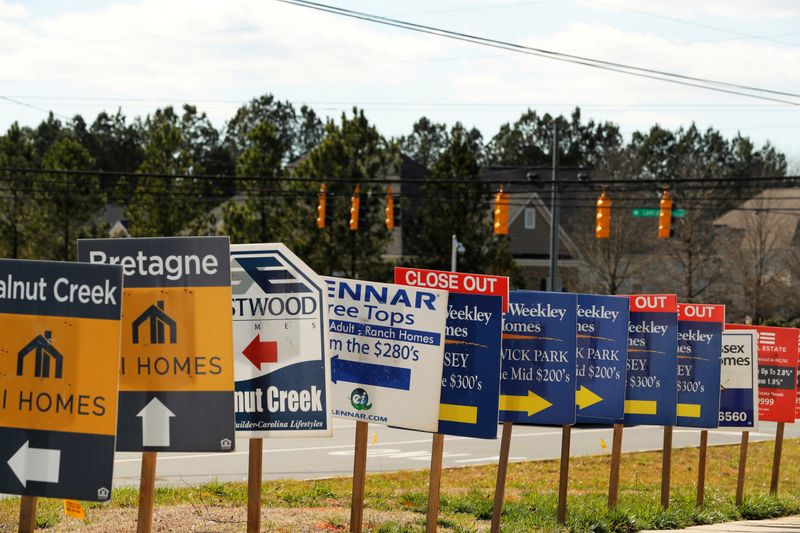WASHINGTON (Reuters) – U.S. home sales fell to a seven-month low in March, pulled down by an acute shortage of properties, which is boosting prices and making owning a house more expensive for some first-time buyers.
Existing home sales dropped 3.7% to a seasonally adjusted annual rate of 6.01 million units last month, the lowest level since August 2020, the National Association of Realtors said on Thursday. Sales fell in all four regions.
Economists polled by Reuters had forecast sales at a rate of 6.19 million units in March. The second straight monthly decline in sales was flagged by a sharp decline in signed contracts and applications for home purchasing loans in February.
Existing home sales, which are counted at the closing of a contract, lag signings by a month or two. That means part of the drop in sales last month was due to harsh weather in February.
Home resales, which account for the bulk of U.S. home sales, increased 12.3% on a year-on-year basis, remaining well above their pre-pandemic level.
The housing market is experiencing a dearth of properties available for sale in the wake of strong demand for bigger and more expensive accommodations as the COVID-19 pandemic forced millions of Americans to work from home and schooling to be conducted remotely.
Though homebuilders have stepped up new home construction, they are grappling with record-high lumber prices as well as shortages of land and workers.
Increased COVID-19 vaccinations, which are leading to broader economic re-engagement, could allow more homeowners to put houses on the market. The pandemic, now in its second year, likely caused some Americans to delay downsizing, starving the market of much-needed inventory.
The median existing house price surged a record 17.2% from a year ago to an all-time high of $329,100 in March. But economists do not believe another housing bubble is developing, noting that the surge is being mostly driven by a mismatch between supply and demand, rather than speculation, which triggered the 2008 global financial crisis.
There were 1.07 million previously owned homes on the market in March, up 3.9% compared to February. Supply plunged 28.2% from one year ago. At March’s sales pace, it would take 2.1 months to exhaust the current inventory, down from 3.3 months a year ago.
A six-to-seven-month supply is viewed as a healthy balance between supply and demand.
First-time buyers accounted for 32% of sales in March, up from 31% in February and down from 34% in March 2020.
(Reporting by Lucia Mutikani; Editing by Andrea Ricci)

























